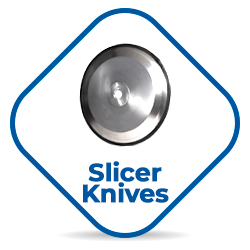
Get Professional Results with the Right Meat Slicer Parts and Blades
Meat slicers are essential tools in any kitchen! They make it easy to get professional results with the right parts and blades. But without proper maintenance, they can quickly become dull and inefficient! That's why having the right meat slicer parts and blades is so important. Replacing old, worn-out blades should be your first step when troubleshooting a slicer at home. If you're looking for an upgrade, then investing in quality aftermarket parts and blades is an excellent choice. After all, it won't do much good if you install cheap or low-grade ones that will only deteriorate over time. Moreover, different types of meat require different slicing techniques. For instance, deli meats like salami or ham need to be thinly sliced while tougher cuts of beef should be thickerly sliced. By using high-quality meat slicer parts and blades designed for this task, you'll achieve superior results every time! Finally, regardless of what type of meat you're slicing, remember to always use caution when handling sharp objects such as knives or slicer parts/blades. Be sure to keep them out of reach of children and always wear protective gear like gloves when working
read more
What is the Secret to Long-Lasting Meat Slicer Parts and Blades?
The secret to long-lasting meat slicer parts and blades is regular maintenance. It's important to ensure that all components are in good condition before using them, otherwise you risk causing damage. Regularly cleaning the blade and sharpening it when needed will help it retain its integrity for a longer period of time. Additionally, replacing worn parts can significantly extend the life of your slicer. Yet, there's more to consider! Storing the slicer properly is essential; exposing it too high temperatures or cold drafts can negatively affect its performance. And don't forget to oil the moving parts on occasion - this will lubricate them while also helping to prevent rust from forming. Last but not least, make sure you disconnect the power cord after each use! In conclusion, proper care and maintenance is key for preserving meat slicer parts and blades. To sum up: clean regularly, sharpen when dulled, replace worn components, store appropriately and oil moving pieces - doing so will keep your device functioning for ages!
read more
What is the Right Tool for Sharpening Your Meat Slicer Blades?
Sharpening your meat slicer blades is an important part of maintaining and extending the life of your equipment. But what's the right tool for the job? To answer this question, let's take a look at some of the options! First, there's a honing steel. These are specially designed rods that sharpen knives with their abrasive surface. They're fast and easy to use, but they don't actually remove any metal from the blade. So, while they can help keep your knife sharp in between full sharpenings, they won't get rid of nicks or heavily worn edges. Next up is a whetstone. This type of stone is used to grind away metal from blades with its coarse surface. It takes some practice to use correctly, but it can be very effective in restoring a dulled edge on a knife or slicer blade. However, because it does require some skill to use properly, it might not be ideal for someone without experience sharpening blades. Finally, there are electric sharpeners which make sharpening easier than ever before! These machines utilize different types of grinding wheels that quickly restore even heavily worn blades back to their
read more
What is the Best Way to Replace Your Meat Slicer Parts and Blades?
Replacing your meat slicer parts and blades can be tricky, but there are some sure-fire ways for ensuring you get the best results. First of all, it's important to research what types of parts and blades will work best with your slicer model (if you don't know, ask a professional). You should go with a brand that is known for its high quality and durability - this'll save you money in the long run! Once you've identified the right kinds of parts and blades, it's time to start shopping around. Don't skimp on price - buy from trusted sellers who offer a warranty against any defects or malfunctions. Also make sure to check customer reviews. This could give you valuable insights about how well the product performs in real-world situations. Moreover, make sure to double check the size and shape of each blade before purchasing them; otherwise they may not fit properly into your machine! Some equipment manufacturers also offer their own replacement parts which come pre-calibrated for optimal performance. In either case, take care when handling these sharp objects as they can cause serious injury if handled incorrectly!
read more